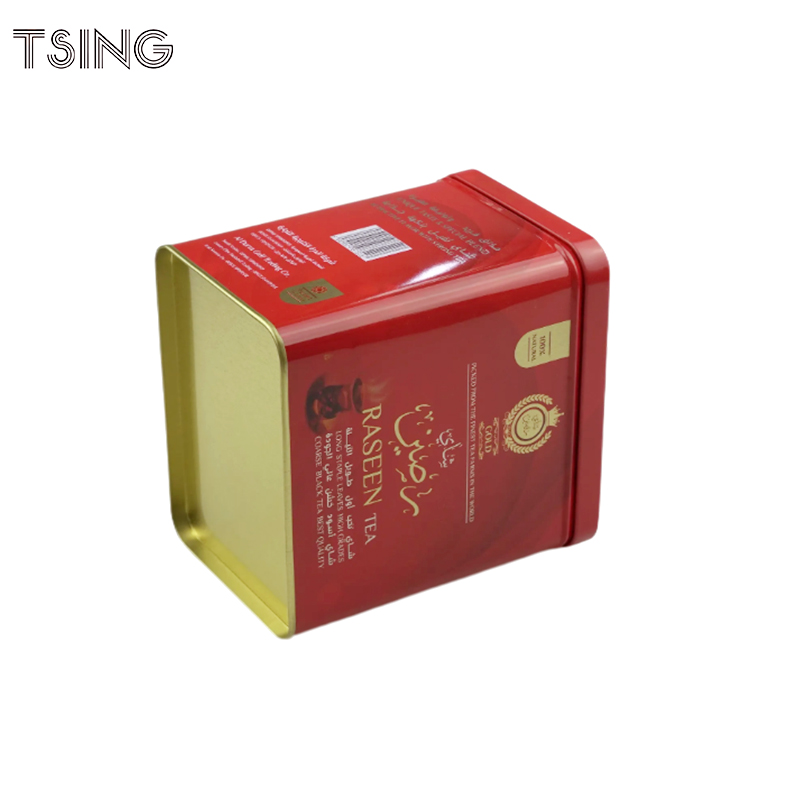Detailed explanation of the core components from the lid to the lining of the metal candle tins
When producing high-quality metal candle tins, every core component, from the lid to the liner, works together to protect the candle wax, retain the scent, and ensure safe use. Many manufacturers and brands consider seal integrity, material compatibility, aesthetics, and heat resistance when selecting metal candle tins. So we will also explore the main parts of metal candle jar components in this detailed overview: removable lids, tin bodies and seams, base design, decorative exterior finishes, interior coatings and liners, and the sealing gasket or sealing ring that completes the package.
Types of metal candle tin lids
The lids of metal candle tins play a key role in fragrance preservation, safety, and branding. Common lid types include:
- Slip-on lids: Simply press on the tin’s flange to fit tightly for daily use. Tsing controls the flange tolerance within ±0.2 mm during manufacturing to prevent air leaks that can reduce the candle’s scent.
- Screw-on lids: The neck of the bottle has fine threads, and the lid has corresponding threads. This design is extremely airtight, effectively sealing out dust and moisture, making it perfect for limited edition or scented candle collections.
- Hinged Lid: Decorative custom metal candle tins often used in high-end gift sets. Tsing spot-weld or rivet the hinges with corrosion-resistant alloys to ensure they withstand repeated opening and closing without loosening.
In addition to the material, the thickness of the lid also affects its sturdiness and ease of access (typically 0.3-0.5 mm tinplate). Tsing adds brushed or matte finishes to the lid to enhance the grip. Quality inspectors also perform torque testing during inspection to measure the force required to open and close the lid, ensuring the performance of thousands of products.
Metal Candle Tins Body Structure and Seam Integrity
The body of a metal candle tin provides structural support, holds the candle, and provides a canvas for branding. Tsing usually make the body panel from tinplate, with the thickness ranging from 0.25mm for lightweight travel tins to 0.5mm for more solid, large-capacity containers. Key considerations include:
- Sidewall Forming: Tsing forms the can body using a multi-pass deep-drawing process to prevent wrinkling and ensure uniform wall thickness. Additionally, Tsing uses precision molds and presses to guarantee that the sidewall concentricity remains within microns.
- Seam Type: The sides of the two-piece tin are joined with either a lap seam or laser weld, ensuring a smooth, seamless interior to prevent wax or wick residue from collecting. In addition, the seam height is less than 0.5mm to avoid interference with candle liners or labels.
- Dimensional Tolerances: Diameter tolerances are controlled to within ±0.15 mm to ensure lid compatibility and consistent fill levels. When Tsing assembles metal candle tins on its production line, it typically controls the height tolerance within ±0.2 mm to provide a uniform appearance.
Automatic lasers measure the critical dimensions of each tin after forming, and the system then rejects parts that fall outside of tight tolerances. As a result, by controlling tin structure and ensuring seam integrity, metal candle tins offer discerning consumers reliable performance, leak-free operation, and an upscale appearance.
Base Design and Structural Stability
The base of a metal candle tin must be able to support the weight of the candle, wick assembly, and any decorative components without warping or tipping. Standard base configurations include:
- Flat bottom: creates a slightly raised dome (0.3-0.8mm rise) to prevent vacuum formation during cooling and ease removal from the stamping die.
- Recessed foot ring: Shallow grooves near the circumference stabilize the tin on a flat surface and provide a small air gap to dissipate heat while the candle burns.
- Anti-slip reinforcements, such as micro-etched patterns or rubber adhesive pads, prevent sliding on smooth countertops, thus increasing safety.
The base material is usually the same thickness as the sidewalls, but larger metal candle tin cans (over 100mm in diameter) can have ribs added to reduce flex. Laser-cut or punched vents minimize airflow at the bottom of the tin, helping to maintain a consistent burn. We also perform drop and compression tests to verify the base’s resilience.
Decorative Topcoats and Protective Coatings
Exterior finishes transform bare metal into an eye-catching brand statement, while interior coatings protect against candle wax and fragrance oils corrosion. Common exterior treatments for metal candle tins include:
- Powder Coat: This creates a durable, even finish that resists scratching and chipping. It is available in glossy, matte, and textured finishes.
- UV-cured printing: enables high-resolution graphics, metallic inks, and spot varnish effects to highlight logos and product details.
- Soft-touch lamination: uses polymer films to create a premium velvety feel for a tactile experience.
A 3—to 8-micron-thick food-grade or candle-safe lacquer is applied to the interior to prevent the metal from interacting with the wax, which can cause discoloration or change the tin’s scent. In addition, some metal candle tin cans are coated with multiple layers of coatings, such as primer, corrosion-resistant layer, and topcoat, to extend their durability in humid environments.
Liners and heat-resistant barriers for metal candle tins
The lining of metal candle tins not only ensures chemical compatibility with the wax but also stabilizes heat transfer and simplifies cleaning after burning. Additionally, core options include:
Epoxy Phenolic Lining: This lining provides excellent adhesion and continued protection against wax migration and metal corrosion, rated up to 150°C.
Silicone-based high-temperature coatings: Expand and contract with the wax, minimizing cracking and flaking under thermal stress.
PTFE linings: Used in specialty cans for certain soy or gel wax formulations, providing a non-stick surface and easy removal of residual wax.
Liner thicknesses typically range from 5 to 25 microns, with thin coatings susceptible to high-pressure pinholes, while thicker coatings may crack. The installation used an automated spray system equipped with precision nozzles to ensure even coverage, and the lining was cured under infrared lamps at a controlled temperature. Additionally, after curing, the tanks were placed on a mandrel and tested at 120°C for two hours to confirm the integrity of the lining.
Adding a Sealing Gasket for Quality Assurance
After metal candle tin cans are assembled, a sealing gasket or ring is added to ensure that the lid-to-tin connection remains airtight during storage, thereby retaining fragrance and preventing dust ingress. The gasket’s cross-sectional thickness ranges from 1 mm to 3 mm, and its elasticity must maintain compression during temperature cycles (-20 °C to +50 °C).
To ensure quality:
- Seal integrity testing: measuring air leakage rate under five bar differential pressure.
- Thermal cycling: exposing the assembled tins to freeze-thaw and high humidity conditions.
- Long-term storage testing: monitoring fragrance retention for up to 12 months.
By combining robust gasket design and rigorous quality assurance with the comprehensive insights detailed above—including lid tolerances, tin construction, decorative surface treatments, and heat-resistant linings—Tsing therefore ensures that it can confidently produce custom metal candle tins that are not only functional but also aesthetically pleasing and highly reliable.









 Facebook
Facebook Twitter
Twitter Linkedin
Linkedin